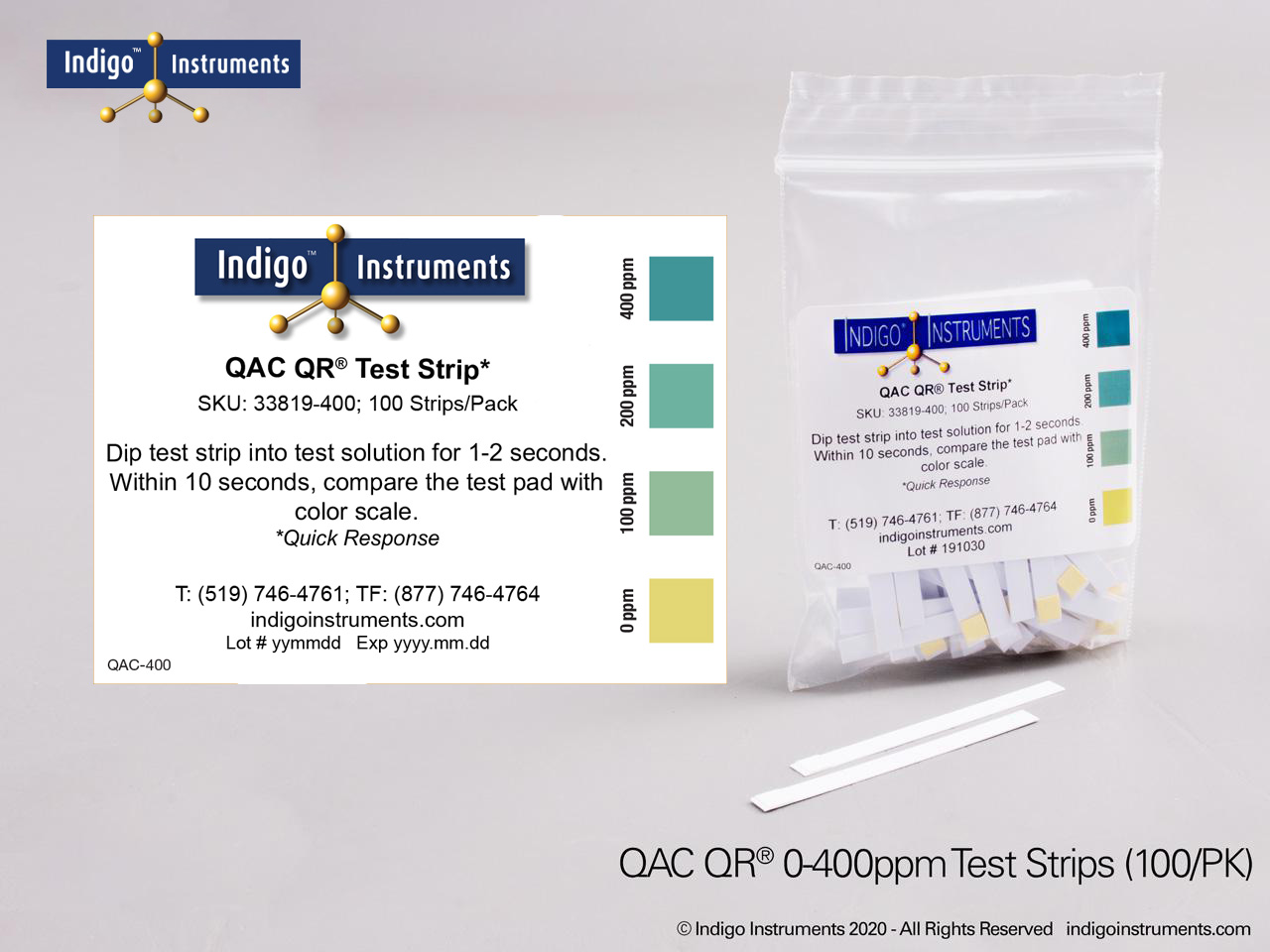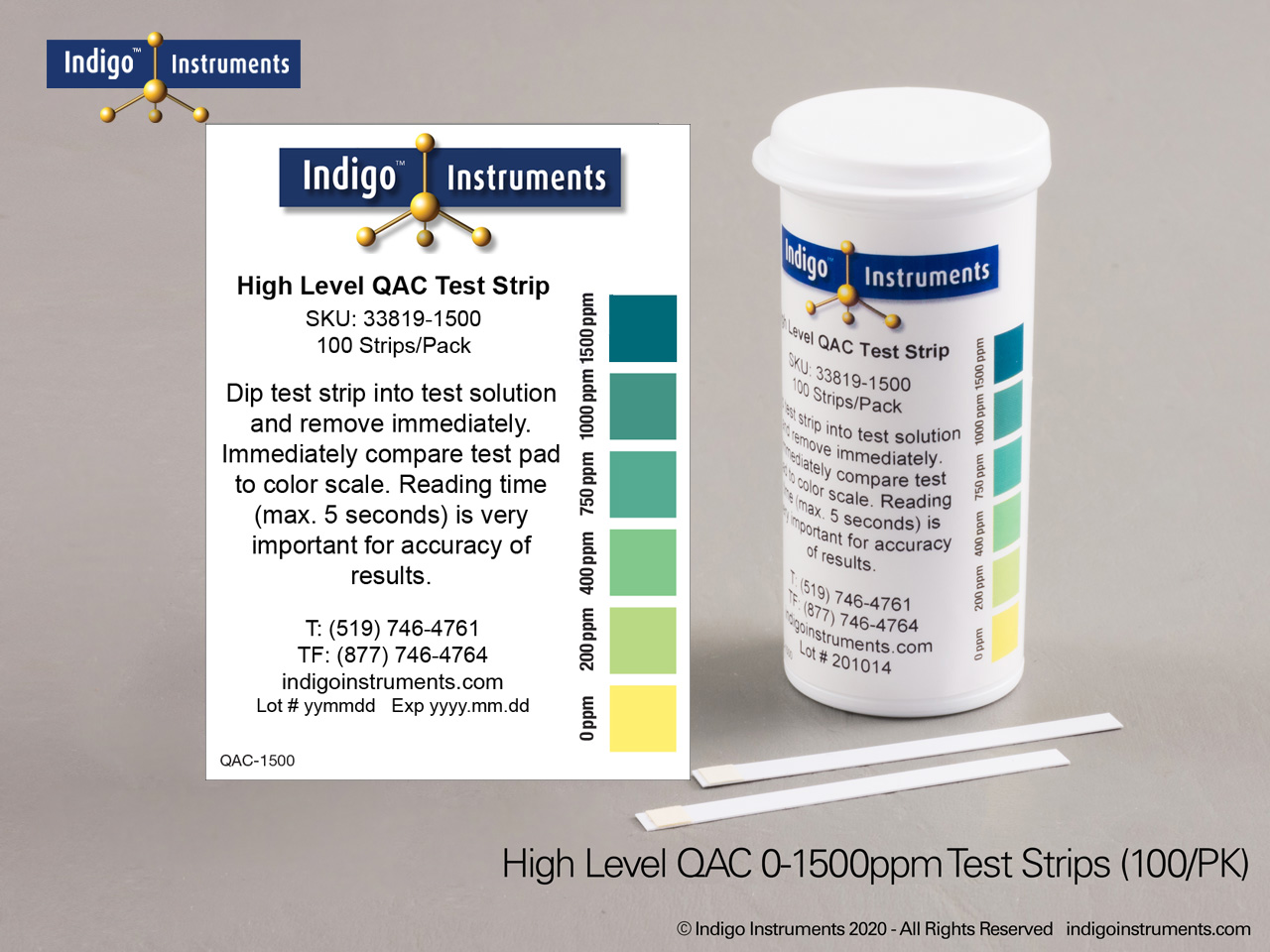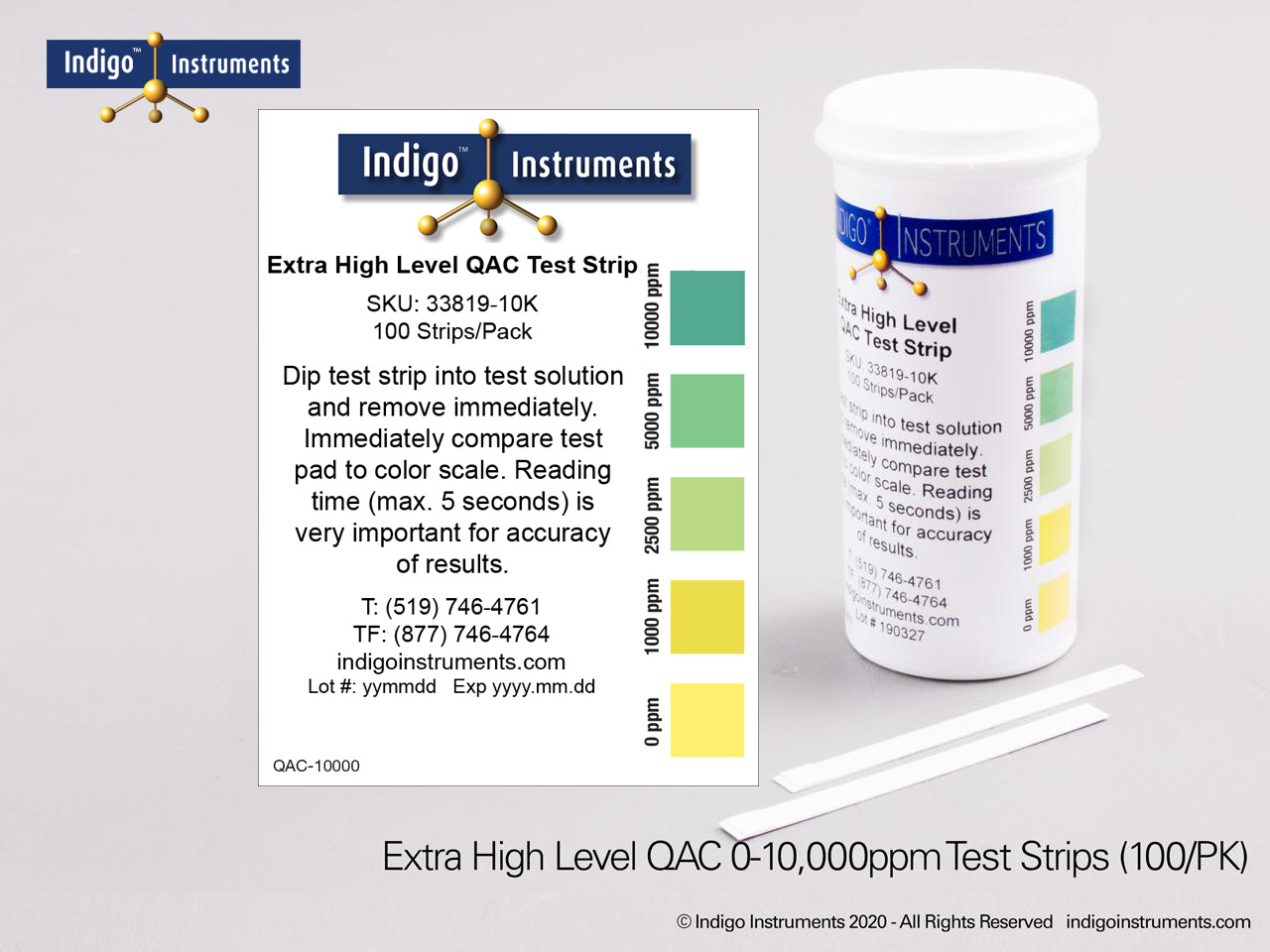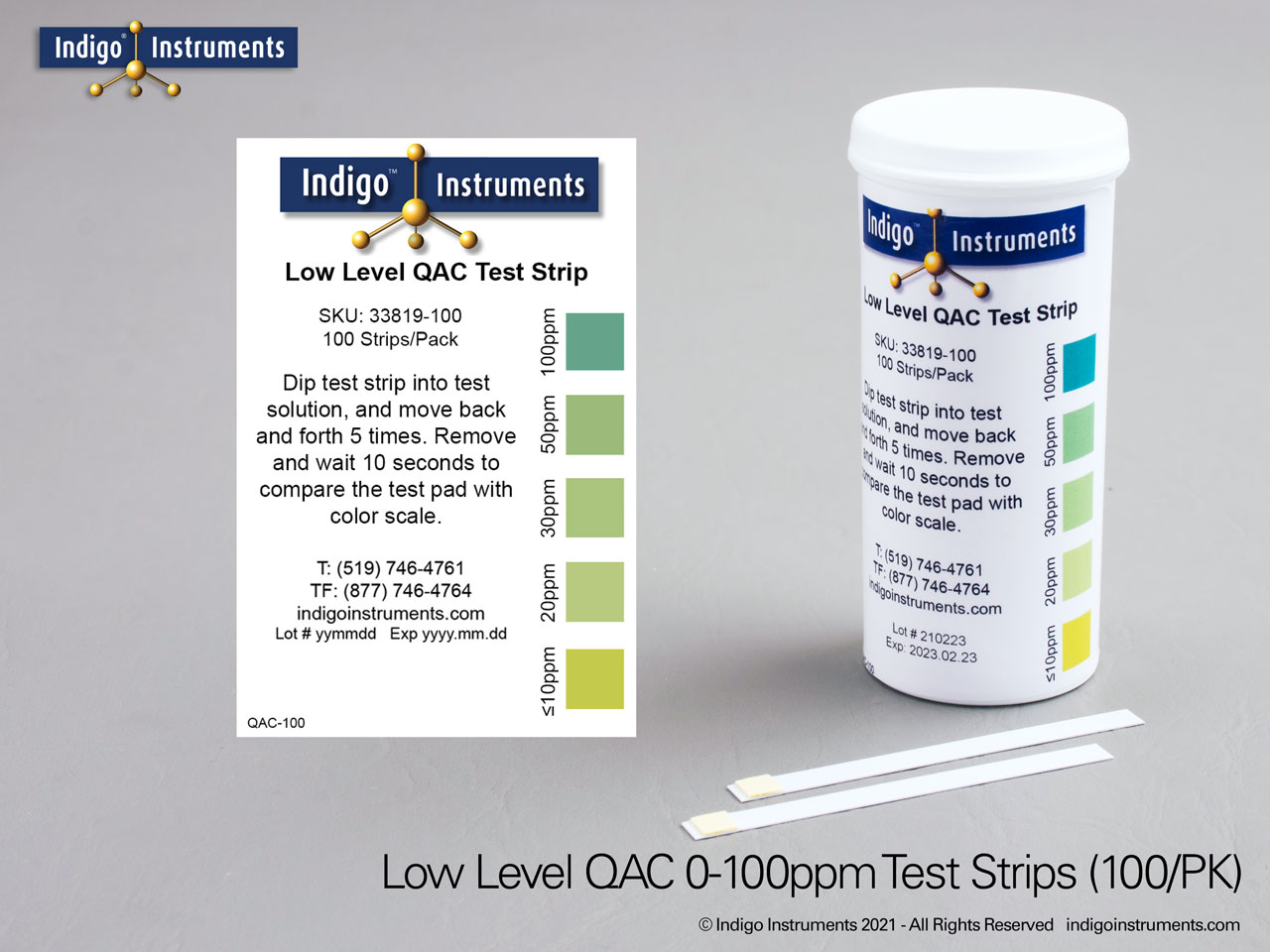Quaternary Ammonium Disinfectant Compounds
Indigo® quaternary ammonium compound test strips confirm optimal dilutions for disinfection & sanitizing in restaurants, hospitals, organic farming & more.
All come with 100 test strips/vial and a guaranteed 3 year minimum shelf life. Certificates of Analysis, Stability & SDS Statements are on-line; Certificates of Conformance available on request.
Buy Indigo® test strips, the brand you can trust for accuracy & technical support. Call us on our toll-free line for immediate assistance or e-mail us with your questions. 1 hour response is typical during business hours, M-F, slightly longer on weekends. Optional next business day delivery in any quantity of most items.
Overview of Quaternary Ammonium Disinfection Compounds
Quats are effective germ-killers and a key ingredient in many cleaning, disinfection & infection control products. They are found in every day products such as household toilet cleaners, antibacterial hand soaps, dish washing liquids, baby wipes, body washes, disinfectant sprays & more.
Quats are especially effective on hard, non-porous environmental surfaces. They are used in hospitals, long-term care facilities, households & food processing plants to name a few.
Quaternary ammonium compounds (quaternary ammonium salts) are cationic biocides (positively charged surface-active agents) that are more chemically complex than other disinfectants. Their name derives from the central nitrogen (quaternary ammonia) that is bound to four organic groups. They interfere with the metabolism of Gram-negative & Gram-positive vegetative bacteria and lipophilic viruses.
They have several advantages in the fight against antimicrobial resistance. Unlike antibiotics, disinfectants like quats are non-specific in their targeting of microorganisms. Their amphiphilic nature (having both hydrophobic & hydrophilic properties) allows for enhanced binding affinity that can disrupt bacterial cell membranes causing cell lysis.
(See More Info below to compare quat chemical structures.)
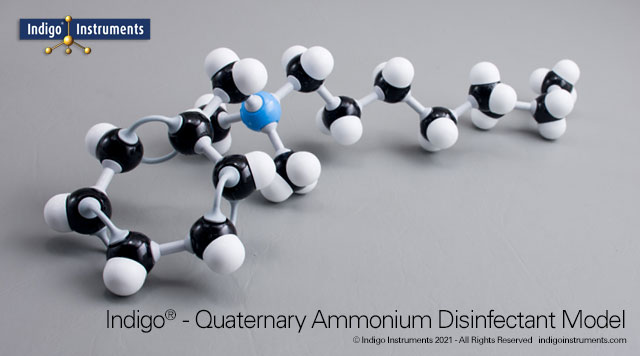
Quaternary ammonium compound disinfectant structure model from Indigo® Instruments.
Whatever formulation of quaternary ammonium you use, Indigo® quat test strips can confirm your disinfectant solutions are correctly diluted for optimum effectiveness.
Indigo® Quat/QAC Test Strip Ranges
- 10-100ppm: ≤10-20-30-50-100ppm; read results in 10 seconds
- 0-400ppm: 0-100-200-300-400ppm; read results in 10 seconds
- 0-1500ppm: 0-200-400-750-1000ppm; read results in 5 seconds
- 0-10000ppm: 0-1000-2500-5000-10000ppm; read results in 5 second
Common Features of Indigo® QAC Test Strips
- clear instructions with the labeled color chart
- indicators on high contrast plastic for accurate readings
- stiff plastic strips can be dipped into tubes
- accurate from 5-45oC (50-110oF)
- 3 year guaranteed shelf life
- Certificate of Analysis & Stability Statement online; SDS & Certificate of Conformance on request.
Note: All test strips Made in the USA & are Q/A'd against NIST standards.

